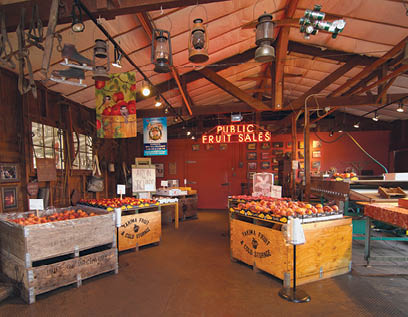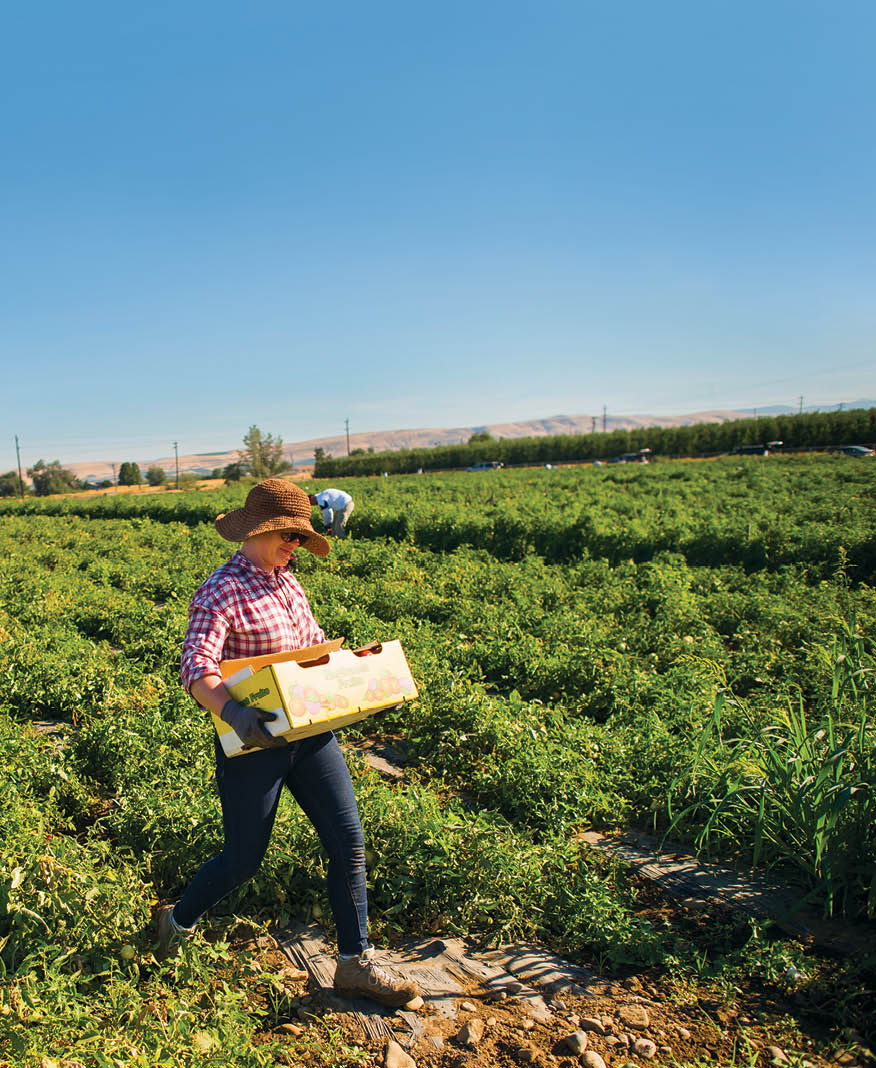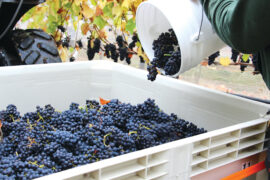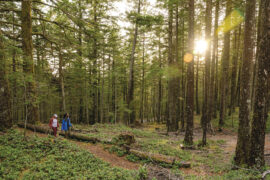written by Daniel O’Neil
Compared to a grocery store scene of unripe fruit languishing under fluorescent lights, the Yakima Valley resembles Eden. Cherries, peaches, apricots, nectarines, apples and pears, basking in a canopy of vibrant green, all dazzling in the sweet summer sun—this is where fruit actually comes from. In Washington, there’s no better place to buy fresh fruits and vegetables and learn about how they’re grown than from Yakima fruit stands, orchards and farms that dot Yakima’s rustic landscape. Grab an empty cooler, your sweet tooth and go taste for yourself.

Since the mid-1800s, fruit trees have flourished in Yakima, an area so sunny it calls itself the Palm Springs of Washington. At the turn of the century, irrigation of rich volcanic and sedimentary soils quickly yielded plump crops of tree fruit like apples and cherries. Orchards outnumbered homes in Yakima until the 1950s, when new residents began driving to the nearest barns to buy fruit directly from the grower.
The tradition continues today for locals and visitors. Two hours east of Seattle, Yakima’s orchards and fruit stands make for a delectable day trip—all roads in Washington seem to lead there. The Yakima Valley Travel Guide maps out dozens of places to buy farm-fresh fruit, and you never know what you’ll find on their tables each day. Produce is sold by the pound, box or wholesale bin. Cartons and bags are free, or bring your own. As for choosing the best fruit, use your nose to sniff out the ripest pieces.
A stop at three or four retailers or orchards fills a day, and a car, with fresh produce. One modern classic is Barrett Orchards, opened in 2004 in north Yakima. Fourth-generation farmers from the valley, Mark and Cheryl Barrett nestled their fruit stand in a 45-acre orchard. “You’d be surprised how many people come across the mountains,” Barrett said. “They want to go to the farm.” Barrett’s and other stands have picnic areas, so pack a lunch, liquids, a hat and sunscreen, because Yakima summers get hot. Wandering the rows of trees to sample fruit is encouraged, and, at Barrett’s, an interpretive trail leads through the art of growing cherries, Yakima’s signature summer produce. “We built this as a destination, an orchard experience,” Barrett said. He even offers U-pick cherries for a short time each year.
Different varieties of sweet cherries grow from mid-June to late July, coloring the trees and tables like fireworks. Lapin, Skeena, Tieton, Bing, Chelan, Rainier and Selah are a few. “Cherry season is my favorite time of year,” said Eric Johnson, who runs the business his great-grandfather, a Swede, planted in 1904. The original 1916 Johnson Orchards packing warehouse serves as storefront today, an orchard oasis in the heart of town. Which cherries to buy depends on the time of season, but, “Bing and Rainier, when picked right, are the best,” Johnson said.
Besides the succulence of big-name varieties, the Yakima Valley promises rarities like the Burlat, a soft-flesh dark cherry which distributors ignore. Precision Fruit, however, just north of Yakima alongside Interstate 82, does sell elusive cherries like Burlats when available. It also sells antiques. Dedicated to retail, Precision has offered a cornucopia of Yakima Valley fruit since 1946. “Our valley produces great stuff, but we also have great people who produce it,” said Jim Burkett, son-in-law to the store’s second-generation owners.
Just like Barrett, Johnson, and the valley’s other stands, Precision Fruit provides a selection of the freshest Yakima fruit as it arrives each season. For tree fruit lovers, this means peaches, which take over in mid-July and sometimes continue into October. Whether for canning or eating, Elberta peaches reign supreme. The heirloom variety is delicious in so many ways—Barrett Orchards sells Elbertas in peach smoothies, Johnson Orchards in homemade peach pies, and Precision as its top-selling canned fruit.
Peaches make for a great find on stands’ second-quality tables, where the price of a pound encourages binge eating. But money is always well spent on tree-ripened peaches picked earlier that morning. Fruit destined for grocery stores tends to be picked green, and once it turns peach in color it never tastes like its sweet, perfumed, juicy counterpart on the farm. Besides Elbertas, the Sugar Lady, Sweet Dream, donuts and late-ripening O’Henry represent some of Yakima’s peach bounty.
A full experience of Yakima Valley fruit requires several visits, in summer and fall. By mid-July, apricots and nectarines come in. Pluots and plums appear in mid-August, when pears also begin. For an abundance of fresh peppers of every sort, stop by Krueger Pepper Gardens in south Yakima. Johnson Orchards grows enough pears to propose ten varieties at once by mid-summer. Apples end the season, and Barrett Orchards celebrates the harvest with October Days, which includes cider pressing, a pumpkin patch and a hay maze for the kids. Rain comes infrequently to Yakima.
Valley fruit stands also sell local, freshly picked vegetables in season—think asparagus, tomatoes, corn and zucchini—to complete the basket. Local honey, wine and more typically line the shelves. “We’re like a mini farmers market,” Johnson said. Certified organic fruit is available at many stands, and grown at places like Barrett’s.
In this new era of online grocery shopping, a trip to the farm seems imperative. Plus it’s fun, and a good reason to get in the car. More than just a simple transaction, buying fresh fruit from the source grows a connection to the land and to the people who cultivate it. In the scenic Yakima Valley, this means passionate growers and sellers and a garden of delights plump with variety and riper than you’ve ever tasted.







